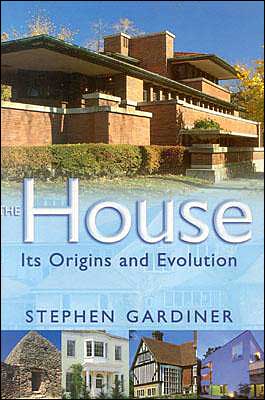House
The
author of "The Soul of a New Machine" analyzes the intimate details of
building a new house from the point of view of those involved--from
owners and architects to builders and carpenters Google Books
House - Tracy Kidder - Google Books
Tracy
Kidder takes readers to the heart of the American Dream: the building
of a family's first house with all its day-to-day frustrations, crises,
tensions, challenges, and triumphs.
Contents
| 204 | |
| 220 | |
Section 12
| 279 |
| 293 | |
| 303 | |
| 329 | |
| 331 | |
Section 17
| 335 |
About the author (1999)
----
中村好文
中村好文(Nakamura Yoshifumi)建築師,一九四八年生於日本千葉縣,一九七二 年畢業於武藏野美術大學建築系。一九七六年到一九八○年為止,在吉村順三設計事務所工作。一九八一年設立□□□□□□□(Lemming house)事務所。一九八七年以「三谷先生的家」獲得第一屆吉岡賞。一九九三年再以「一系列的住宅作品」獲得第十八屆吉田五十八賞特別賞。現在,擔任日 本大學生產工學部居住空間設計課程教授。
中村好文先生自學生時代起,就有志於把住宅設計和家具設計當作一生的工作。自創業以來,已經設計過百間以上的住宅以及各色各樣的家具。除了建築專業外,他還以喜愛旅行和料理、輕妙灑脫的隨筆作家身分而為人所知。
從 其著作可以感受到作者是個纖細、柔和、風趣的藝術家,所以文章中常可以見到諸如遊戲之心、餘裕、自然體這樣的言詞。他每天和事務所的人一起用早餐,自己也 參加抽籤以決定早餐的工作任務,有時擔任採買,有時擔任烹飪。他認為生活不只是工作,所以過著普通人的生活,乃是住宅設計上非常必要的條件。建造一個家最 感愉快的是,能夠與住在那個家的spirit(靈魂或精神)相遇的瞬間。而所謂舒適的空間,就是能讓自己感覺自然的地方,所以他心中理想的家就是感覺像穿 著牛仔褲這種居家服的家。
他的主要建築作品有:「三谷□□□家」(1986)、「朝吹□□□家」(1991)、「清水高原□家」 (1992)、「上□□家」(1993)、「今村家改修」(1994)、「美術館as it is」(1995)、「扇□谷□家」(2001)、「風子□□□」(2002)、「REI HUT」(2003)等。
《住宅巡禮》北京: 中國人民大學 2008
《住宅讀本》北京: 中國人民大學 2008
中村好文建築四書【意中的建築上+意中的建築下+住宅巡禮+住宅讀本】
- 作者:中村好文
- 原文作者:Nakamura Yoshifumi
- 譯者:林錚顗
- 出版社:左岸文化
- 出版日期:2008年
<住宅巡禮>這本書可說是二十世紀世界「住宅建築」之旅,是作者走訪八位二十世紀偉大建築家所設計建造的九件不朽住宅名作,藉由置身於那些住家中並在其四周走動,記下所見、所思、所感而寫成的。所以本書既像是旅行日記,又像是建築的導覽書,也像是素描和照片組成的田野調查筆記。
從本書的內容中,藉著作者的眼和手,讀者得以了解到柯比意、萊特、阿斯普龍德等建築大師是如何思考人與建築的關係、什麼樣的住宅空間和設計才是他們認為理想的方式。
住宅讀本
書中分為十二個章節,以居住者的角度來討論「舒適住宅空間」的十二項條件。
本書作者對圍繞住宅和生活周邊的日常瑣事以及生活的微妙處有著特別的喜愛和觀察,所以在日本被稱之為「住宅設計師」。本書正是他多年思考「究竟什麼是好住宅的條件」、「什麼是居住所不能欠缺的條件」等問題而記下的觀察心得。
作者認為,所謂「住宅」,並非只是把人的肉體放進去,在裡面過著日常生活的一個容器,它必須也是能夠讓人的心,安穩地、豐富地、融洽地繼續住下去的地方。所以他試圖以居住者的角度,列出了十二項觀察標準來討論「舒適住宅空間」所應具備的條件。
總之,住宅的設計不再是能夠輕忽怠慢的領域,終於進入必須認真地重新思考的時代了。
意中的建築上下
本書作者自述從小老是被人說眼光敏銳,而也正是因為他對人或事物有盯著看的癖好,常被長輩斥責沒禮貌,長大後甚至因此而引發被注視者的不滿導致暴力衝突。
不 過,這種「眼光敏銳」和「觀察癖」用在觀察事物上,則如魚得水。基於建築家的職業興趣,當他觀察建築物時,不問古今,不問東西、不問地點的條件、不問大 小、不問貴賤。不管是歷史上的知名建築,路旁的粗糙小屋,電影和繪畫中的建築物,舉凡能抓住他的眼睛,能激起他興趣的,都一視同仁地送上好奇且專注的目 光。
因此,打從某個時期以來,那種令人動心、令人神往、一見難忘的建築物,已然牢牢地進住作者心中。而這本書就是在作者走訪那些逗得他心情舒暢、 讓他時時回想的「意中的建築」之後,就它們的印象和魅力,想起甚麼就寫甚麼之下所完成的東西。原本它便不是研究書之流,既沒有精緻的分析,也沒有深刻的考 察。所以本書的書寫比較像喃喃自語,也像是鑲嵌著照片和插畫的一種畫冊,或許可以稱之為作者的「建築心情手札」。也因此,讀者在閱讀本書時,請帶著閒適的 心情,隨興之所至,從任何章節開始讀起,都是無妨的。
作者將本書獻給那些心中擁有珍藏的寶物,而且細心照顧它的人,也就是說對「意中的……」這個詞句,能和他產生共鳴的讀者。
The House: Its Origins and Evolution

Product Description
Stephen Gardiner offers an enlightened overview of the development of the house and home, from its beginnings in the caves of early man, through all the variety of structures that have since evolved, influenced by climate and material, but also by culture, custom and religious beliefs. A rich production of indigenous styles has emerged, from huts of mud and reeds, Ziggurats, Chinese underground villages with sunken courtyards, multi-storeyed tenements in Ancient Rome, Japanese designs that blend with nature, Indian towns laid out like a cross, the Palladian and Georgian Arts and Crafts and, coming into the modern period, the rediscovery of a more human scale, and the importance of the frame, in particular in the designs of Le Corbusier and Frank Lloyd Wright.Gardiner succeeds in showing why people have historically built as they have, and how they think about the houses they design, explaining why, from being merely a shelter, the design of a house has come to express ideas about space, aesthetics, custom and culture. Now, after the later twentieth-century's violent swings from tower blocks to Post-modernism and Neo-traditionalism we face a new danger, the creeping sprawl of building that is swallowing up much of our beautiful countryside.
Gardiner shows how the collapse of traditional values since World War II has been mirrored by the new architectural emphasis on materialism, bringing a disregard for the lessons of the past, and a loss of contact, both with human requirements and with nature as a source of inspiration. But Gardiner also offers a strand of hope, a vein of architectural excellence that runs through the chaotic post-war picture and points the way ahead.
From the Publisher
An overview of the development of house and home, from its beginnings in the caves of early man through the variety of structures that have evolved, influenced by climate and materials but also by culture, custom, and religious beliefs. Mr. Gardiner succeeds in explaining why, from being merely a shelter, the house has come to express ideas about space, aesthetics, customs, and culture. Gardiner is most readable, unpretentiously scholarly, and he moves through time with confidence and sound architectural judgement. —Eric Lyons, SpectatorAbout the Author
Gardiner is an architect and writer.
Library Journal
As indicated by the verso's fine print, this work reprints Gardiner's Evolution of the House: An Introduction (1974; o.p.). The text appears to be identical, with the addition of two new chapters at the end on postwar urbanism, postmodernism, and the return to low-rise housing and an epilog that encourages harmonious residential developments based on 18th-century models and principles. Many of the same black-and-white illustrations, line drawings, and unevenly contrasted photos are recycled. Moreover, the bibliography hasn't been updated, the most current book listed having been published in 1971. The work is organized thematically and is generally a straightforward and basic survey, although enigmatic chapter headings such as "Solids," "Outlines," "Life Is One Animal," and "Jigsaw" are confusing. A useful historical and anthropological survey in its day, covering human shelter from prehistoric caves and Near Eastern mud brick houses to contemporary designs, this work has long been superseded by newer and more informative works, such as Norbert Schoenauer's 6,000 Years of Housing. Not recommended. Russell T. Clement, Northwestern Univ. Lib., Evanston, IL Copyright 2002 Cahners Business Information.人类的居所:房屋的起源和演变
作者: (英)加得纳译者: 汪瑞
出版社: 北京大学出版社
出版年: 2006-10-01
页数: 314
内容简介 · · · · · ·
从原始的洞穴棚屋到现代的摩天大楼,与人类生活息息相关的庇护所在绵延数千年的历史长河中不断演变发展。但是不管建筑如何变迁,依旧有一些东西是人类不能忘却的,古老的语言不一定意味着它们都已过时,相反,在建筑里,某些规则因循了千百年,至今依然奏效。
作者简介 · · · · · ·
斯蒂芬·加得纳
是以为英国建筑师,也是一名建筑学批评家,著述颇丰,在《伦敦杂志》、《旁观者》、《观察家报》、以及《泰晤士报》、《建筑评论》等多加报刊上发表了文
章,主要专著有《人类的居所――房屋的起源和演变》、《勒·柯布西耶》、《爱泼斯坦――反体制的艺术家》等。
目录 · · · · · ·
前言第一章 概述
第二章 实体
第三章 框架结构
第四章 花园
第五章 寂静的中心
第六章 生命是一只野兽
第七章 拼图
第八章 肯定之否定
第九章 统一的构架
第十章 机器
第十一章 曼荼罗
第十二章 时尚的年代
结语 过去,现在,未来
参考文献
译名对照表
后记









